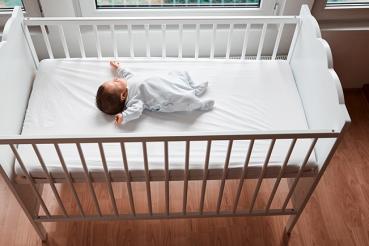Are you hoping your son will be the next Steph Curry? Does your daughter aspire to play goalie for the U.S. women's soccer team?
While many kids dream of becoming a professional or Olympic athlete, there may be physical and emotional drawbacks to children in elementary and middle school training like one.
Specializing — playing one sport year-round without enough time off to rest and recuperate — at a young age increases a child's risk of injury (including serious problems like bone deformities) and can lead to burnout.
Before you allow, or encourage, your child to become a single-sport athlete, read what Charles Bush-Joseph, MD, a sports medicine surgeon at Rush and team physician for the Chicago Bulls and Chicago White Sox, has to say:
A shift from engagement to performance
In the late 1990s, there started to be a shift from participation leagues — the American Youth Soccer Organization (AYSO), for instance — to club level sports. When these youth club sports started to take off, it really changed the formula from participation and engagement to participation and performance/skills development.
A lot of kids who used to play two or three sports decided to focus instead on a single sport.
This had always been the case with gymnastics and ice skating. For those sports, you always had to be a year-round athlete. So we already had a high incidence of both overuse injuries — from doing the same activity or motion over and over — and traumatic injuries in those kids.
But now, the same is true for soccer, baseball, softball and basketball. There's a lot more pressure on the kids, physically and mentally, because the sport is a 12-month pursuit instead of three or six months.
The effects of playing year-round
These are some of the common overuse injuries I see in younger athletes:
- "Little League elbow" is an epidemic among baseball players. Repetitive throwing causes a very strong pull on the tendons and ligaments in the elbow. The child may experience pain, restricted range of motion and locking of the elbow. Over time, this pulling can lead to serious injury or even bone deformity.
- "Little Leaguer shoulder" is often seen not only in baseball players, but also tennis players and gymnasts whose growth plates are still open. When the growth plates close, usually around age 18, they are replaced by solid bone. Repeated overhead motion can damage the growth plates, causing pain and other symptoms. And in the most extreme cases, bone growth can actually be stunted if the injury isn't quickly and properly addressed.
- Anterior cruciate ligament (ACL) tears, while they happen to both boys and girls, are more common in young female athletes. This is especially true in sports like soccer and basketball where you do a lot of jumping, sudden stopping and starting, and making quick directional changes — motions that put a great deal of stress on the knee.
Mental and emotional fatigue, or burnout, is a huge problem — possibly more so than injuries. That can be true for younger kids as well, and for any sport.
Why specialization can lead to burnout
Mental and emotional fatigue, or burnout, is a huge problem — possibly more so than injuries.
A good example is when high school girls choose not to play high school soccer because the competition is not as good as it is at the club sport level. But these girls miss out on all the wonderful social aspects of playing for their school team: bonding with teammates, school spirit activities, etc.
Instead of a fun sport, soccer becomes a job. That can be true for younger kids as well, and for any sport.
If you suspect your child is suffering from burnout, have a heart-to-heart talk. Find out what the problem is, how your child is feeling and what he or she wants to do.
Children may be afraid to tell their parents they aren't having fun or want to quit, because they think you'll be angry or disappointed in them. Reassure your child that you support him or her no matter what, and that you'll help figure out the best solution.
Is it ever OK for kids to specialize?
By high school, specialization is accepted. In fact, you don't see nearly as many two- or three-sport athletes these days. However, until they are 14 or 15, kids should have at least a three-month block each year where they participate in something other than their specialized sport.
Not only does specializing too early raise the child's risk of injury and burnout, it can also limit the child's options. Sometimes kids will hit their peak in a sport at 12 or 13 and can’t move up to the next level, or they simply don't enjoy it anymore and want to quit.
If that's the only sport they've learned, they're then stuck with no other sport to fall back. They'll never know whether they had greater ability in — or would get more enjoyment from — another sport or sports.
Helping kids make healthy choices about sports
On the issue of specialization, it's the parents' responsibility to set limits. This is no different than a child saying, "I want to eat nothing but candy because I love eating candy." Would you allow that to happen? Of course not.
This is where parents need to be parents and not friends. You want to encourage your kids, but you need to help them make good choices — not just for now, but for their futures.
There are relatively few professional athletes. If all you've been focusing on your whole life is your sport, and you don't make it to the pros, what will you have to fall back on? That's why it's important for kids to grow up well-rounded, to have a range of skills and interests that go beyond that one sport.
The best thing parents can do is help their kids find a variety of pursuits that give them pleasure, regardless of their skill level. Help them remember to just be kids.




